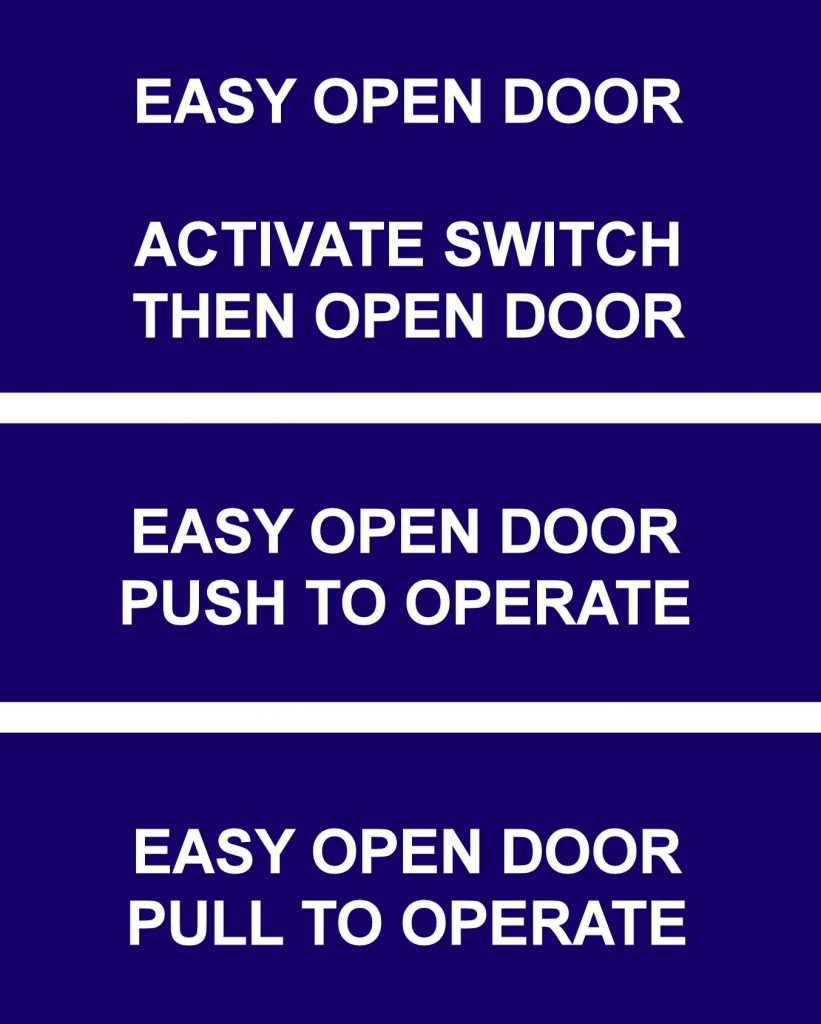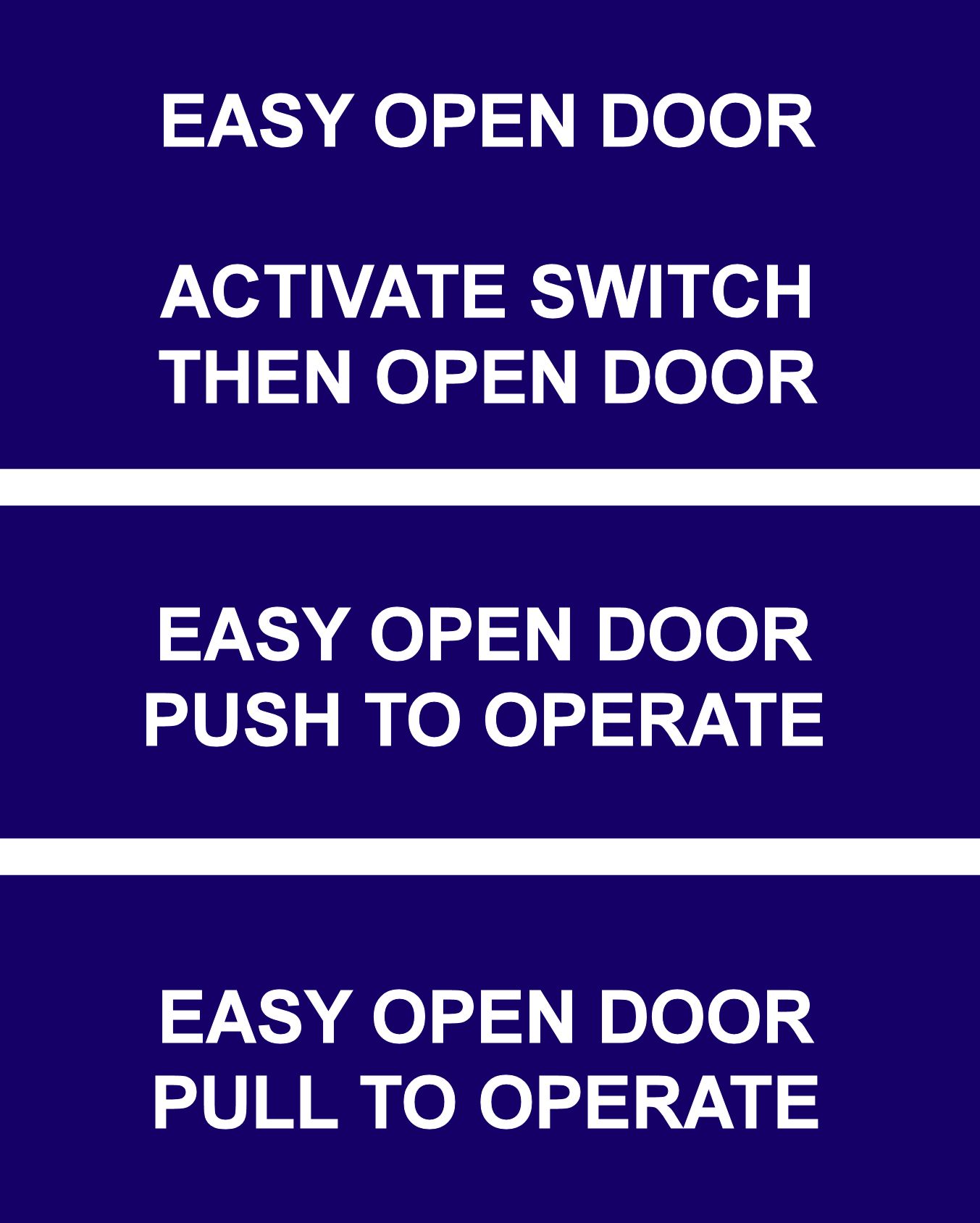 This is Part 1 of a 2-part question, so check tomorrow’s post for Part 2. First, I’d like to clarify what defines a power-assist operator. Although many people think that a power-assist operator is the same as a low-energy operator, or that it is an automatic operator that is initiated by pushing or pulling on the door, BHMA A156.19 defines it this way:
This is Part 1 of a 2-part question, so check tomorrow’s post for Part 2. First, I’d like to clarify what defines a power-assist operator. Although many people think that a power-assist operator is the same as a low-energy operator, or that it is an automatic operator that is initiated by pushing or pulling on the door, BHMA A156.19 defines it this way:
2.3 Power Assist Door A door with a power mechanism that activates by pushing or pulling the door, reducing the opening resistance of a self-closing door to allow easier manual opening of the door. If the opening force on the door is released, the door shall come to a stop and either immediately begin to close, or begin to close after a predetermined time.
The key difference between a low-energy operator and a power-assist operator is that a low-energy operator opens the door automatically, and a power-assist operator reduces the opening force but still requires the user to open the door manually. While the definition does mention pushing or pulling the door, a power-assist operator can also be activated by a button on the wall which reduces the opening force (but does not automatically open the door). A156.19 says: “Power assist doors shall operate only by pushing or pulling the door. An activating means is permitted to be used to put the door in the power assist mode.”
Power-assist operators are not very common these days, which is probably where the confusion arises. The accessibility standards recognize low-energy operators and power-assist operators as two different things, with a third category for full-powered automatic doors that must comply with BHMA A156.10. One important thing to note about power-assist doors is that they are subject to the maneuvering-clearance requirements for manual doors. This makes sense, because power-assist doors are operated manually, but with less force than a manual door.
Any questions before we move on to QQ Part 2?
You need to login or register to bookmark/favorite this content.






is a push and go feature on a low energy door considered power assist?
No – check back tomorrow. That’s Part 2! 🙂
– Lori
People today would assume that a wall switch will activate a low-energy operator and not just an power-assist operator. I imagine that would cause some confusion for someone if they kept hitting the wall switch and the door not opening automatically.
Very good point Eric! The only people that know the difference are those skilled in the trade.
This “power-assist” device is an enigma! All kinds of regulations regarding their operation and signage and such, but I’m not able to find a manufacturer who makes such an item — and I’ve searched many times (would be ideal for use with large/heavy doors). LCN used to have a pneumatic power-assist device some 35 years ago, but no longer offers it. I’d always thought that Stanley made one, but I’ve confirmed that they don’t. An assisted-living center facility I’d surveyed had one, or so I thought: it was a very-slow-opening low-energy operator with jamb-mounted actuators and with a Push-N-Go feature. Manually pushing the door initiated the opening operation, and you could feel the motor operating and “helping you” open the door (very easy push, but I didn’t measure it…), but when you stopped pushing the door would very slowly continue to cycle fully-open. Of course, you could just use the jamb-mounted actuator and catch a nap while the door opened.
So, I guess a low-energy operator with Push-N-Go can be field-adjusted to function ‘like’ a power-assist device. I’d be very interested in knowing of a true “power-assist” device, though.
What is the requirement for hardware to work with low-energy auto door operators (ADO)? Does ADO require either electrified strike or lock/exit device with electrified latch retraction?
Hi David –
If the door has latching hardware and an automatic operator (not power-assist), the latch needs to be released before the door can open. Electric strikes and electric latch retraction hardware are good options, and some systems include a mag-lock instead of latching hardware.
– Lori
Lori, you remain my most reliable source for all-things–doors. You cannot see me salute each time, but I do .
Now I am imagining you saluting, Michael! 🙂
– Lori
Will a power assist operator still be able to identify stack pressure and power close the door to prevent the door from drifting in drafty conditions?
So if I’m dealing with a barrier free Universal Washroom as per CSA B651-18 paragraph 6.3.2Washroom door C) have a power assisted door opener am I to understand a person would need to physically open and close the door? If this is the case what purpose does the door opener serve??
If it happens to be that the door is fire rated what would be the problem with using a closer with swing free arm and tied to the fire alarm? In either case why wouldn’t a door hung on BB hinges not meet the power assist requirement?